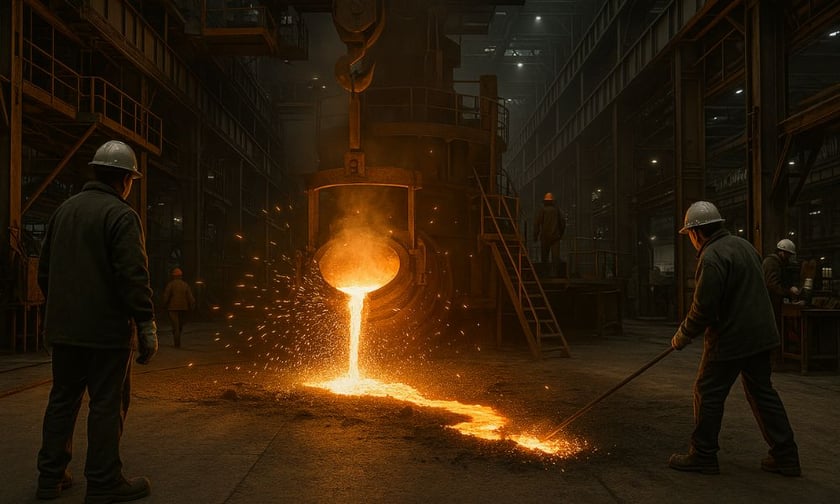

The resurgence of US-based manufacturing, supported by government incentives and reshoring efforts, is bringing renewed focus to risk mitigation strategies.
Among them, errors and omissions (E&O) insurance is becoming increasingly relevant, particularly as technological complexity, regulatory demands, and extended supply chains introduce new exposures.
“Longer supply chains, technology integration and detailed production processes continue to increase the potential for errors,” said Zach Harsch, assistant vice president with Amwins Brokerage in Kansas City. “Regulatory scrutiny and evolving industry standards add layered complexity to emerging risks.”
E&O coverage is gaining new relevance as macroeconomic factors alter the landscape for US manufacturers. The expansion of tariffs this month, intended to protect domestic industries by taxing imported goods, has created potential openings for manufacturers to reshore operations.
While some sectors – such as steel and aluminum – have seen immediate shifts, others are still adapting. With this realignment, manufacturers face operational challenges that may trigger claims tied to errors, omissions, or compliance missteps.
Harsch explained that manufacturers are facing a wide spectrum of potential liabilities, from flawed product design to service delivery failures.
“E&O coverage is a safety net for manufacturers to protect them from financial loss associated with product or service errors,” he said. “Policies can also cover legal fees, settlements and judgments resulting from manufacturing mistakes or negligent service.”
Tariff-related changes can compound these risks, particularly as companies shift suppliers or change production locations to navigate new trade rules. Misclassification of goods under revised tariff codes, for example, could result in regulatory penalties and legal action.
These trade compliance errors – while not typically associated with traditional liability policies – may fall within the scope of a well-structured E&O policy.
“Assembly, fabrication, and installation; the design and engineering of a product; distribution and logistics coordination; marketing and licensing; labeling, printing, and packaging; product use training and instructional support; raw material procurement; advice and consulting services” are all areas where E&O coverage can apply, Harsch said.
While manufacturers often carry general and product liability insurance, these policies do not address financial loss resulting from a defective or poorly executed product.
“General and product liability policies primarily cover bodily injury and property damage; they do not cover faulty product repair, replacement or consequential financial losses,” Harsch said. “Manufacturer’s E&O, however, protects against financial loss resulting from manufacturing errors and omissions.”
This distinction can be critical for businesses that face claims without accompanying physical damage.
“If a product is faulty, poorly designed or incorrectly manufactured, E&O steps in to cover the resulting financial damage, even if there’s no bodily injury or property damage involved,” Harsch said. “It also covers negligence, such as failing to deliver promised services or providing incorrect product instructions that lead to business interruptions or lost profits for a client.”
These challenges are being intensified by disruptions to global supply chains. In the wake of tariffs, companies dependent on international components may encounter delays or contract breaches, particularly if alternative sourcing arrangements fail to deliver on time.
In such cases, clients may seek compensation for losses, and E&O coverage could respond to claims alleging failure to meet obligations or delivery timelines. Harsch pointed out that E&O insurance also responds to less obvious risks.
“E&O insurance protects against ADA compliance issues and intellectual property disputes involving copyright or trademark infringement,” he said. “Legal costs, disciplinary proceedings and subpoena requests may also be covered, along with expenses tied to crisis management.”
A faulty component or service might trigger a financial domino effect for a downstream business, even without an accident or injury.
“If the problem stems from the design, manufacturing, sale or installation of the product (including training and maintenance), E&O coverage can help ensure that your client’s business is protected from financial fallout,” said Harsch. “For example, if a manufacturing flaw causes a third-party business to lose revenue or incur recall costs, E&O insurance can help cover those losses.”
Increased litigation risk is another concern as trade tensions rise. Disputes over pricing, delivery obligations, or intellectual property may become more common, especially where retaliatory tariffs or supply chain issues escalate friction between contracting parties.
E&O insurance offers a potential buffer against claims stemming from these types of economic disputes. According to Harsch, many buyers are prompted by contractual requirements.
“Regulations and contractual requirements often mandate E&O insurance, particularly in industries where manufacturers provide professional services, design consultation or technology integration,” he said. “Many suppliers and customers also require manufacturers to carry E&O coverage to mitigate financial exposure and push risk off of their balance sheets.”
These terms can offer financial security in an increasingly digitized and automated production environment.
“Emerging risks such as cyber threats, automation failures and supply chain disruptions further underscore the need for a robust E&O policy,” Harsch said. “As more manufacturers incorporate artificial intelligence (AI) and automated systems into their processes, the potential for technology-related errors grows, making coverage that includes cyber liability and technology errors increasingly important.”
What are your thoughts on this story? Please feel free to share your comments below.
